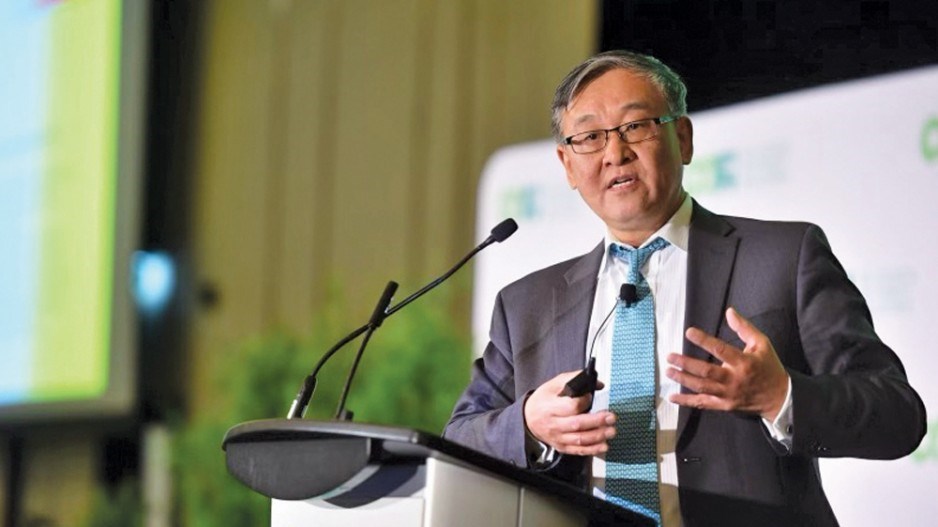For more than four decades, since the collapse of the Soviet Union and end of the Cold War, free trade and globalization have knitted the economies of the world together in a way that has been generally mutually beneficial.
But a global pandemic revealed the risks of over-dependence on other countries for crucial medical supplies such as N95 masks, respirators and pharmaceutical ingredients. The pandemic and supply chain disruptions caused a shortage of semiconductors, which are needed to make everything from electronics to cars. The U.S. produces only about 12 per cent of the computer chips its industries need.
And now war in Ukraine has exposed the risk for Europeans of being dependent on Russia for energy.
While the immediate challenge for business, as a consequence of the pandemic and war in Ukraine, is getting through inflation and its cure – higher interest rates and a possible recession – the longer-term problem may be finding a footing in shifting sands that could be moving in the direction of deglobalization.
“I think the globalization 2.0 that came to characterize the 1990s and early 2000s is very much behind us, and we’re going to see a different kind of equilibrium,” Jock Finlayson, the Business Council of British Columbia’s senior policy adviser, said at a recent Council of Forest Industries (COFI) conference.
Finlayson was among the speakers who discussed the short and long-term implications for trade in a world where the Iron Curtain has been redrawn around Russia, and where the West, particularly the U.S., is moving to distance itself from China and to repatriate certain key manufacturing industries.
With Russia isolated from the West, a trading bloc involving Russia, China and some Middle Eastern countries could evolve.
“Are we looking at a long cycle here where, after all the focus of developing north Asia, the balance has shifted back toward the Atlantic?” asked Robert Johnston, special adviser for the Eurasia Group, which monitors 100 countries around the world to provide risk analysis and business intelligence.
Johnston said possible outcomes of the war in Ukraine range from a ceasefire and easing of sanctions against Russia to full-scale war between Russia and other European counties.
Whatever the outcome, Russia has essentially been kicked off the global Monopoly board. Numerous multinationals, from Royal Dutch Shell, BP and Exxon Mobil (NYSE:XOM) to SAP (NYSE:SAP), Deutsche Bank and IKEA are pulling out of Russia.
“None of these multinationals are going back to Russia any time soon,” Johnston said.
The West has responded to Russia’s invasion of Ukraine with sanctions and military support for Ukraine on a scale that has surprised many, notably China.
“I can tell you, they are shocked by the scale of the sanctions against Russia and Russian people,” said Wenran Jiang, president of the Canada-China Energy and Environment Forum.
He noted that China holds US$3 trillion in foreign exchange reserves. The Chinese worry that the U.S. could hit them with the kind of financial sanctions it has imposed on Russia, like locking it out of the SWIFT financial system, should it try a military occupation of Taiwan.
“Nobody wants to talk about it, but everybody’s talking about it,” Jiang said. “Is China going to be the next Russia vis-à-vis Taiwan?”
Should the U.S. ever impose the same kind of financial sanctions and trade blockades on China that it has imposed on Russia, it would rock the global economy to its foundations. While Russia plays an outsized role in the production of key commodities like oil and natural gas, it is an “economic minnow,” with the GDP of Texas, Finlayson said.
China is no minnow. It is the world’s second-largest economy and has close to 29 per cent of the world’s manufacturing capacity. China’s manufacturing output and capacity is equivalent to the U.S., Japan and Germany combined.
“The first worst scenario is China becomes Russia and Taiwan becomes Ukraine 2.0,” Jiang said. “If the U.S is doing what they do to Russia to China, the Chinese economy is not Russia. China has around 130 countries trying to be [its] largest trading partner. The magnitude would be totally different. We’re looking at an economic and financial nuclear war.”
Mindful of how reliant it is on China for things like rare earths, batteries, electronics and pharmaceuticals, the U.S. government has been moving towards a “decoupling” strategy and pushing to “re-shore” and “near-shore” manufacturing for certain key products.
China is likewise moving towards greater self-reliance for certain industries, especially in the area of technology.
“Foreign firms will face an increasingly difficult environment inside China,” the Eurasia Group warns in its recent Top Risks for 2022 report. “China’s drive towards self-reliance and technology decoupling will put additional pressure on these firms.”
But the economies of China and the rest of the world have become too interdependent for a sudden wholesale break with China. Jiang does not believe Canada can or will follow the Americans’ decoupling strategy.
“The reality is we can’t,” he said.
China is Canada’s second-biggest trade partner. Trade between Canada and China was close to $100 billion in 2021, according to Statistics Canada. China represented 4.5 per cent of Canada’s total exports ($35 billion) and 7.8 per cent of imports ($60 billion).
“The numbers don’t add up for Canada to diversify away from China,” Jiang said. “We need peace with China.” •




